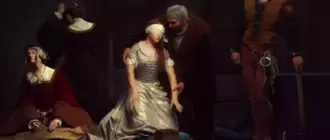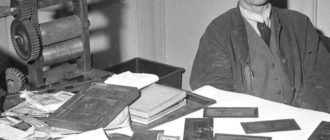
Hyperrealism or superrealism is a direction in painting, graphics and sculpture of the late XX – early XXI century, which is characterized by the most realistic authenticity of artistic images. The works of hyperrealism are visually very similar to high-quality photographs created using expensive cutting-edge photographic equipment.
Hyperrealism is a style in which the author, when painting a picture, pays great attention to drawing objects and details. For the artist, the main goal of creativity is the illusory accurate and dispassionate copying of the objects of the image. In its ideological focus, hyperrealism is in many ways similar to pop art, both styles are popular variants of modern figurative art.

Features of hyperrealism
Hyperrealism, in contrast to the close-in-spirit photorealism, has a distinctly noticeable emotional component. When working on a painting, drawing or sculpture, the author creates an extremely realistic artistic illusion of an object with a flawless surface texture, play of shadows and lighting effects. This style is the complete opposite of conceptualism, in which the author’s idea is considered much more important than the way of his artistic expression.

The main features of hyperrealism include the following nuances:
- Using photographic equipment to create and transfer the original image to the canvas.
- A variety of materials used for the manufacture of sculptures.
- Significant sizes of paintings.
- Wide application of airbrushing and glazing techniques when painting pictures.
- High resolution images with meticulous rendering of every detail of the object.
Hyperrealist artists most often work in the genre of portrait, landscape or still life. In addition, among them there are also authors who prefer to create works of art on acute social and political topics.
For skillful artistic imitation of color and black-and-white photographs, masters of painting and graphics use a variety of techniques and tools:
- simple pencils and pastels;
- sanguine and coal;
- oil and acrylic paints;
- ballpoint pens and aerosols.
- History of hyperrealism

History
The history of hyperrealism, as well as its related photorealism, goes back a little over half a century and dates back to the late 1960s. New styles appeared largely due to the significant improvement in the technical capabilities of photographic equipment in those years. Cameras with high resolution appeared on the market, which were ideal for creating high-quality pictures. This served as the impetus for the creation of paintings based on photographs using artistic techniques and tools.
For the first time, the general public heard the term hyperrealism in 1973 at the exhibition of the same name in Brussels. The author of the name of the new style was the Belgian antique dealer Isy Brachot. The exhibition became a bright event in the cultural life of Europe, it featured the works of many American. German, French and Italian masters of the new style. The works of hyperrealists aroused great interest among critics and the public, but over the next 10 years, the mass enthusiasm for ultra-fashionable art gradually passed.

The second wave of interest in hyperrealism was prompted by the emergence of widely available digital photography at the beginning of the 21st century. Compared to analog technologies, the resolution of still images has been significantly improved. Artists finally have a great opportunity to take high-quality photos and use them as a basis for their paintings and drawings.
Today, hyperrealism is an important part of contemporary visual art. Exhibitions of works by artists of this style invariably draw huge crowds of spectators.

The most famous masters of hyperrealism
Among the outstanding representatives of this style, there are many interesting creative personalities living in different parts of the world. Some of the most famous masters of hyperrealism include:
- Ron Mueck is Australia’s most famous contemporary hyperrealist sculptor. He easily creates both small compositions and huge monumental works of art.
- Gottfried Helnwein is an Irish artist of Austrian origin who has gained worldwide recognition for his active social position and acute social orientation of his work. In his work, Helwein often refers to the theme of the Holocaust.
- Emanuele Dascanio is a young Italian painter specializing in black and white paintings and portraiture.
- Bernardo Torrens is a Spanish painter known for his magnificent portraits of men and women cut off from their natural habitat. For Torrens, the artist’s ideal was and will always be his great countryman Diego Velázquez.











